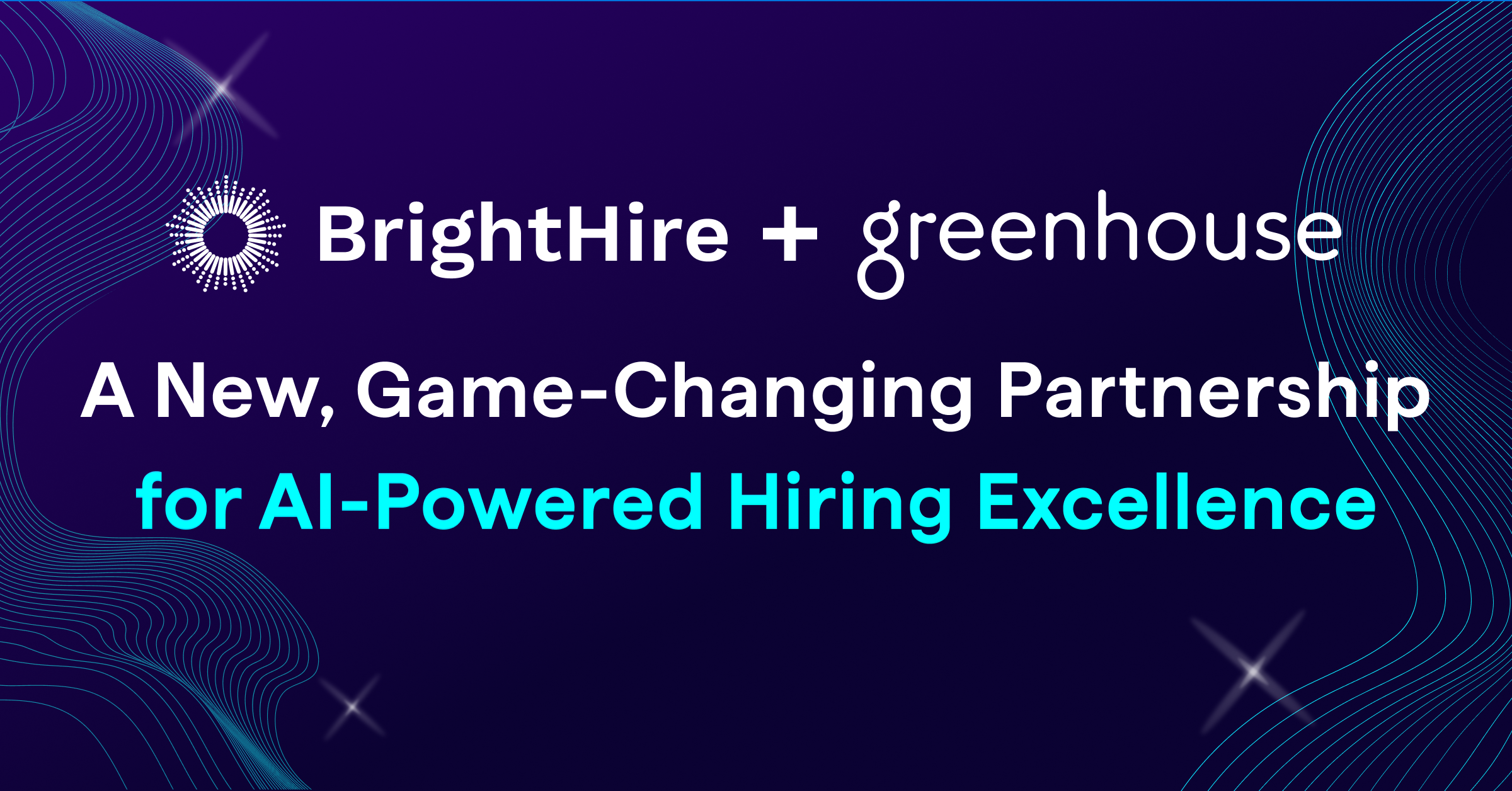It’s spooky season, y’all. That means it’s time to put on your favorite sweater, grab your pumpkin spice latte, and join us at the campfire for some spooky stories. No, we’re not talking about hauntings. These tales are about something even spookier: the eight major recruiting scaries.
Read on to uncover the recruiting scaries and get advice from talent acquisition leaders to help you navigate each one.
The 8 Major Recruiting Scaries
1. The Ghost
Our first spooky tale is a story as old as time for recruiters. An excellent candidate makes it through multiple interview rounds, and you think they could be the one. Then, all of a sudden, they stop returning your calls and messages.
That’s what we call The Ghost. This recruiting scary is a candidate who leaves your messages on read halfway through the interview process.
If you’re encountering The Ghost, give these three steps a go:
Use multiple channels to reach out.
There are several ways to communicate with candidates, from texts to LinkedIn DMs to emails. It may not always be the candidate’s fault if you’re not hearing back. Sometimes technology glitches happen.
If you’re getting the silent treatment, assume good intent from the candidate and try a few more routes. Wes Shoup, Technical Recruiter at Literati, says, “Sometimes your ATS can be finicky, and the emails you send from the platform can go to a candidate’s spam folder. If you think that might be happening, try your direct email or LinkedIn.”
Go back to what worked originally.
If you still have trouble connecting, try the original way you communicated with the candidate. Rachel Clark, Senior GTM Recruiter at NexHealth, says, “When I’m unable to reach candidates, especially a referral or someone I reached out to on LinkedIn, I go back and try the channel I initially used to get in touch.”
Bring in a stakeholder.
If reaching out via the original channel doesn’t do the trick, loop someone else in to reach out. This could be the hiring manager or an interviewer with whom the candidate had a positive conversation.
Rachel says, “Ask them to reach out to the candidate and say, ‘Hey, I really enjoyed the conversations we’ve had. Rachel mentioned she hasn’t heard back from you, is everything okay?’ Sometimes engaging your stakeholders is all it takes to reconnect with candidates.”
2. Zombie Purple Squirrel
There are times when finding the perfect person for a role feels like you’re constantly chasing after the elusive Zombie Purple Squirrel. Or, a candidate with just the right education, experiences, and qualifications who’s always out of reach.
If you’re having trouble finding the right candidates, take a moment to pause. Get to the bottom of the issue by:
Doing your research.
Ashley Bathe, Senior Manager, Global Recruitment at PlayQ, says, “First, I run reporting to evaluate candidate drop off and pass through rates to see if there’s a certain stage in the process where we are losing candidates. It’s also important to look at your pipeline to determine if this is a top-of-the-funnel issue or if there is a hiring profile misalignment because we are rejecting too many candidates.”
Having a transparent discussion with your hiring manager.
After you review your reports, it’s time to reset expectations with your hiring manager.
“I would have a discussion with your hiring manager to revisit the hiring profile and job description to see if their priorities have shifted,” says Ashley. “During this meeting, you can also review pipeline reporting, rejection reasons, and scorecard feedback to further align on the role’s requirements and brainstorm process improvements.”
3. Debrief Dracula
Great hiring decisions depend on effective, productive debriefs between the recruiter, hiring manager, and interviewers. However, there’s nothing more frustrating than a participant derailing the conversation.
Enter the Debrief Dracula – a debrief participant sucking the life out of the discussion. Maybe they’re hyper-focused on a small detail or won’t let others get a word in edgewise. Whatever it may be, this can be a massive blocker for making a good, well-informed hiring decision.
If you’re battling a Debrief Dracula, fear not. Here are three things you can do to get back on track:
Align debrief participants before the meeting.
One of the keys to a great debrief? Invest time before the meeting to ensure everyone involved is on the same page.
Wes Shoup, Technical Recruiter at Literati, says, “In my experience when debriefs go off the rails, it’s because people weren’t aligned on the role and expectations for evaluating candidates. One way to prevent this is by holding pre-briefs before you get to the final interview stage to ensure everyone agrees on expectations for the role and that particular candidate.”
There’s no need to overthink your pre-brief. It’s can be as simple as gathering the team together to quickly establish the following:
- The level of the role you’re hiring for
- What each interviewer’s focus is throughout the interview process
- Why you’re excited about particular candidates
Investing in a pre-brief can save you tons of time and stress down the road.
Create consistency.
Once you gather everyone together for the debrief, there’s one very important thing you need to do to set yourself up for success: go over the agenda. Implementing an agenda and a consistent structure in every debrief makes it easy for participants to understand expectations and what to expect.
Be an advocate for everyone in the room.
If you find one or two people are taking over the conversation, that’s a sign that it’s time to step in and speak up for others.
Jennifer Nyman, Talent Acquisition Manager at Salsify, says, “It’s your job as the moderator to encourage people to speak who may be more introverted. If somebody is taking over the conversation, encourage others to weigh in. This can help make the conversation more balanced.”
If someone can’t move past a particular point they’re trying to make, offer to reconnect later. Jennifer says, “Don’t be afraid to say, ‘This is a good point, but we need to cover the rest of our agenda to move forward. Maybe we can connect after this session to hash this out.’ This way, you don’t lose time to go over everything that you wanted to cover.”
4. The Frankenstein Interview
Just like Dr. Frakenstein haphazardly patched together his infamous monster, your interview process often gets pieced together and slowly becomes an unruly creature over time. Without a plan in place and every piece aligned, your interview process can quickly evolve into an unstructured and disjointed experience that leaves candidates feeling spooked.
When this happens, Ashley Bathe, Senior Manager, Global Recruitment at PlayQ, recommends three steps you can take to build a better interview process:
- Hiring Kickoff Meeting: First, host a hiring kickoff meeting to create the interview plan with the hiring manager. This way, you can hold the team accountable if they try to add additional interviews or skip steps midway through the process.
- Headcount Request Process: Next, you should document the interview process within the headcount request form, so it’s reviewed and approved by everyone involved.
- ATS Documentation: Finally, leverage your ATS to document the process for each open role. Many ATS systems allow you to customize and document your interview process within each role. That way, it creates visibility and accountability across your hiring team. For example, most interview plans include an application review, phone interview, skills test, face-to-face interview, references, and offer stages.
5. The Counter Offer
Ah, The Counter Offer. You’ve likely met this spirit before. It’s the one that whisks away your best candidates with a better offer at their current company or a new employer.
This all too familiar situation is more than just spooky. It can often leave you wondering if there was anything else you could’ve done to seal the deal with the candidate. If you find yourself in this spirit’s presence, keep these words of wisdom in mind:
Uncover important details upfront to foretell if a candidate will choose to stay at their current employer.
When you initially connect with a candidate who isn’t happy at their current role, it’s helpful to do some digging to understand how this might impact you and your offer down the road.
Jennifer Nyman, Talent Acquisition Manager at Salsify, says, “Understand the reasons that they’re looking, like not getting promoted or not being able to work from home, and if they’ve tried to address any of those reasons with their current employer. At the end of the day, some candidates just haven’t asked for those things yet from their employer.”
“I tell candidates that I want to make sure they’re really ready for a change. Obviously, they don’t expect that from a recruiter because they expect you to sell them, but at the end of the day, I’d rather uncover those things upfront. So really just digging into their motivations and not just taking everything at face value helps prevent you from losing candidates to a better offer at their current employer.”
Do your research when a candidate accepts an offer from another company.
Other times, you may lose a candidate to a better offer from a new employer. When that happens, Rachel Clark, Senior GTM Recruiter at NexHealth, recommends the following approach:
“I always try to respectfully understand what the offer was and if the role was similar. If they send me an email, I say, ‘Hey, can we chat through this? I just want to learn from your experience.’ Try to be super empathetic while also making sure that you can provide your hiring manager with more information, so you can work to prevent it from happening again.”
6. The Poacher
Ever had a recruiter steal a candidate right from under your nose? Then you’ve met our next recruiting scary, The Poacher.
When this happens, it can be easy to take it personally. But instead of placing blame on another recruiter, Ashley Bathe, Senior Manager, Global Recruitment at PlayQ, says it’s better to use this as a learning opportunity.
“Every “stolen” or lost candidate offers a chance to reflect and improve your current interview process,” says Ashley. “As every recruiter knows, each scenario has its own intricacies and sometimes it’s truly unpredictable.”
If a candidate is poached from you, Ashley recommends reflecting on these four key areas:
- Length of interview process: Are there too many stages? Is there too much downtime between stages?
- Transparency: Are you upfront about the interview process, salary, etc.?
- Candidate experience: How tuned in are you to the candidates’ interests and priorities? How often do you check in? Is your skills test too laborious?
- Hiring Team Preparedness: Are they pitching the opportunity? Are they creating interview questions, reviewing resumes, etc.? Do they leave time for questions?
Ashley says, “From there, work with your team to figure out what changes (if any) should be worked into your interview process to help you land your next great hire.”
7. Scorecard Skeleton
The feedback you get from interviewers’ scorecards can be the difference between moving a candidate to the next round or saying farewell. But if your interviewers aren’t providing helpful input, it’s easy to make the wrong decision and miss out on great candidates.
The Scorecard Skeleton is an interviewer who only gives you the bare-bone details. They fail to provide examples, their feedback is riddled with unconscious bias, and they never go beyond the surface level.
If you’ve got a Scorecard Skeleton on your hands, ask yourself: What guidance is being provided to interviewers? Where did this guidance come from? More often than not, it comes from previous interviewers. If that’s the case, it’s important for your team to step in and reset expectations.
We spoke with a Senior Recruiter who encountered this problem at their company. Here’s what they had to say:
“When you’re not getting helpful scorecard feedback, collaborate with your hiring managers to help them understand what’s working, what needs tweaking, and what should just be cut. The key is to take a collaborative approach that seeks hiring managers’ input and empowers them to pass along scorecard guidance to their team.”
8. Ax-Wielding Hiring Manager
Sometimes it can feel like the biggest obstacle to achieving your hiring goals isn’t a lack of great candidates. It’s hiring managers who aren’t pleased with any of the options and outcomes.
The Ax-Wielding Hiring Manager is someone who gives the ax to every candidate. Even when you feel like you’ve found some stellar candidates, they surprise you by rejecting the entire group.
If you’re up against a hiring manager like this, it’s best to take a step back. Use this as an opportunity to re-align your expectations with the hiring manager. Go back to the basics and review the job description, role responsibilities, and core competencies you’re searching for together to ensure you’re both on the same page.
Spooky Season Isn’t Over Yet
Which recruiting scary do you think is the spookiest? Let us know by voting for the scariest scary from Monday, October 24 to Friday, October 28 on LinkedIn. The recruiting scaries winner will be announced on Monday, Oct. 31!









